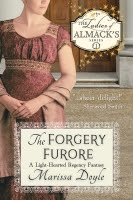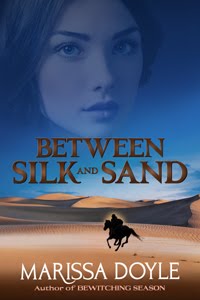 The Shell Grotto.
The Shell Grotto.The Shell Grotto of Margate is shrouded in mystery, from its origin to its rediscovery in 1835. Some say that the Newlove children discovered it while playing and kept it a secret until their father figured it out. Others claim the father stumbled upon it while digging a new duck pond. Either way, the Newlove family was the first to recognize it for something magical.
The Shell Grotto lies deep in a chalk hill: more than 70 feet of winding, branching passages leading to an oblong chamber. The walls and roof are completely covered in strange symbols made of mosaics of more than 50 different types of sea shells, nearly 5 million of them at last estimate! Some of the pictures have been attributed to Indian, Egyptian, and Eastern influences.
And no one in Margate had any idea it was there.
 No maps record its location. No legends detail its origins. No scientist has been able to discover what glues the shells to the walls. Because Mr. Newlove lit his treasure trove with Victorian lanterns, the soot embedding the shells prevents scientists from estimating the age using carbon dating.
No maps record its location. No legends detail its origins. No scientist has been able to discover what glues the shells to the walls. Because Mr. Newlove lit his treasure trove with Victorian lanterns, the soot embedding the shells prevents scientists from estimating the age using carbon dating. Some claim it’s an ancient temple, but the symbols don’t match up with similar temples found in the British Isles. Others claim it was a rich man’s folly, but the land was never part of an estate and no one remembers it being built, so that’s unlikely. The most recent theory is that it was built by the Knights Templar in the 1200s and was first used in Masonic rituals. Seems to me that theory is cropping up a lot, though (National Treasure and DaVinci Code, anyone?).
 Whoever built the Shell Grotto, for whatever purpose, Mr. Newlove knew a tourist attraction when he saw it. He opened the Grotto to the public in 1837, and it’s been fascinating people from all over the world ever since, even nineteenth century researchers like me. And now I have yet one more thing to add to my list of “Wonderful places I want to see in England someday.”
Whoever built the Shell Grotto, for whatever purpose, Mr. Newlove knew a tourist attraction when he saw it. He opened the Grotto to the public in 1837, and it’s been fascinating people from all over the world ever since, even nineteenth century researchers like me. And now I have yet one more thing to add to my list of “Wonderful places I want to see in England someday.”I also have a bit of a dilemma. Only two people commented on last Friday’s post on Bartholomew Fair (too much summer going on???), and both of them have already won fans! So, next Friday I will draw two lucky winners of a Nineteenteen fan. Comment, and you could be one of them. This is your last chance in our August giveaway!





















